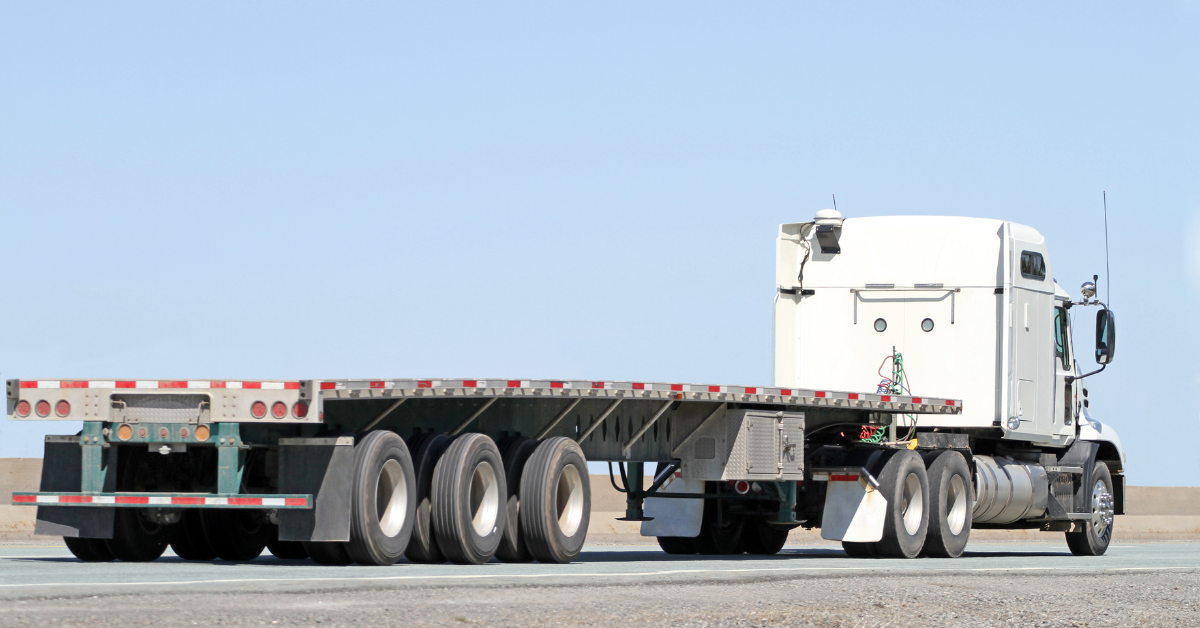DOT truck inspections play a crucial role in maintaining safety and compliance standards for commercial motor vehicles (CMVs) in the United States. These inspections involve a thorough examination of all vehicle parts and accessories to ensure they meet the necessary safety regulations.
This article serves as a comprehensive guide on DOT truck inspections, covering everything you need to know about these assessments and your responsibilities as a driver. It will also highlight the services offered by Red Rover Service, a trusted provider of mobile DOT truck inspections, emergency roadside truck repair, and fleet services.
The Importance of DOT Truck Inspections
Regular DOT truck inspections are not only a legal requirement but also essential for road safety. By ensuring that your CMV is in optimal condition, you can:
- Minimize the risk of accidents
- Protect yourself and others on the road
- Maintain efficient operations within the transportation industry
Now, let’s dive into the details of DOT truck inspections and how you can stay compliant with federal regulations.
Understanding DOT Truck Inspections
Commercial motor vehicles are subject to a periodic inspection at least once every 12 months, as mandated by the Department of Transportation (DOT). These inspections are critical to ensure that each vehicle adheres to safety standards, thus safeguarding the well-being of the driver and the public.
Frequency and Requirements
- Every commercial vehicle must undergo an annual inspection.
- The inspection includes a thorough examination of components like brakes, lighting devices, steering mechanisms, and wheels.
Qualified Inspector
Inspectors must possess specific qualifications to perform DOT truck inspections. This typically includes training and certification in vehicle maintenance and an understanding of federal regulations pertaining to commercial vehicles.
- Role of a Qualified Inspector:Conduct comprehensive evaluations of commercial vehicles.
- Certify that vehicles meet all safety standards.
- Document findings according to DOT requirements.
Training and Certification
The landscape of transportation safety is ever-evolving, necessitating continuous education for inspectors.
- Ongoing Training:
- Keeps inspectors abreast with the latest safety protocols.
- Ensures familiarity with advanced diagnostic tools and technologies.
- Certification:
- Validates an inspector’s expertise in conducting DOT inspections.
- Reflects a commitment to upholding stringent safety standards.
In this environment, an inspector’s proficiency directly impacts the integrity of the inspection process, influencing both compliance outcomes and road safety. Therefore, the role they play is not only about identifying current vehicle conditions but also about preempting potential issues through meticulous attention to detail.
Minimum Periodic Inspection Standards
The Department of Transportation (DOT) mandates the Minimum Periodic Inspection Standards to maintain safety and compliance on the road. These standards dictate the specific elements that must be inspected during a DOT truck inspection.
What are the Minimum Periodic Inspection Standards?
The regulations outlined in Part 393 and Appendix G of the standards manual serve as a checklist for qualified inspectors. They cover key areas such as:
- Brake systems
- Steering mechanisms
- Lighting devices, reflectors, and electrical systems
- Tires, wheels, rims, and hubs
- Windshield wipers
- Rearview mirrors
- Coupling devices
The items mentioned above are not exhaustive but provide a snapshot of the stringent regulations set forth under Part 393.
Additional details in Appendix G
In addition to Part 393, Appendix G goes into further detail on specific components requiring inspection. For instance, it delves deeper into requirements for frames, axles, suspensions, and other critical parts of commercial vehicles.
Why are these regulations important?
Adherence to these guidelines is non-negotiable. Inspectors trained in recognizing defects or issues in these areas play a significant role in ensuring that commercial vehicles meet the stipulated safety standards.
All parties involved – from drivers to motor carriers – must understand and respect these regulations. Their primary goal is to minimize accidents caused by mechanical failure, thereby ensuring safety on our roads.
Motor Carriers’ Responsibilities in Ensuring Vehicle Safety
The role of motor carriers is fundamental in ensuring the safety and compliance of commercial vehicles. Their responsibilities extend beyond simple ownership, encompassing regular inspections, prompt repair work, and consistent maintenance practices.
Systematic Inspection of Commercial Motor Vehicles
A crucial practice lies in the systematic inspection of all commercial motor vehicles under their control. This process involves a thorough check of essential components to ensure they are in a safe and proper operating condition. Prompt repairs follow any identified issues during these inspections, rectifying problems before they escalate into significant concerns that could jeopardize road safety.
Consistent Maintenance for Optimal Vehicle Condition
Beyond inspections and repairs, consistent maintenance is key. It involves routine checks and services to ensure the vehicle remains in optimal condition and adheres to safety regulations. This proactive approach prevents potential issues from developing, further contributing to the overall roadworthiness of the vehicle.
Keeping Detailed Records for Compliance
Motor carriers also have a specific requirement to maintain detailed records of their inspection, repair, and maintenance activities. These records should include:
- The date of inspection or maintenance
- The vehicle identification number (VIN) or other identifier
- A brief description of the inspection, repair, or maintenance performed
- The identification of the inspector or mechanic
These records demonstrate a commitment to ongoing vehicle safety and compliance — an aspect that is not only legally mandatory but also integral for ensuring road safety for everyone involved. Through fulfilling these responsibilities diligently, motor carriers play a vital role in upholding the integrity of our roadways and promoting the well-being of all road users.
The Driver’s Vital Role in Vehicle Inspections and Roadworthiness
The safety and compliance of commercial motor vehicles rely heavily on the driver’s role in routine inspections. Drivers have an important responsibility to conduct both pre-trip and post-trip inspections, which are designed to identify potential vehicle defects or malfunctions that could affect the vehicle’s safety on the road.
Pre-trip Inspections
Before starting a journey, drivers must check the condition of key components such as brakes, tires, lights, and steering mechanisms.
Daily Written Post-Trip Inspection Reports
After completing each trip, drivers must document their vehicle’s condition and report any issues that need attention.
By following these practices, drivers actively contribute to reducing unsafe operations that not only put themselves at risk but also endanger others on the road. It is crucial for drivers to be aware of traffic laws and regulations to avoid incidents that could lead to accidents or regulatory violations during unexpected roadside inspections.
When faced with roadside inspection reports, drivers should:
- Review: Carefully read the report for any mentioned deficiencies or violations.
- Address: Take immediate action to fix identified problems and ensure that the vehicle meets safety standards.
- Report: Inform their motor carrier about any corrective measures taken or necessary maintenance resulting from the inspection findings.
Through paying close attention to details and dedicating themselves to maintaining high standards of roadworthiness, drivers significantly contribute to promoting public safety and reinforcing compliance with DOT regulations.
Ensuring Compliance Through Proper Recordkeeping
To meet DOT compliance, both motor carriers and individual drivers must adhere to specific retention periods for periodic inspection reports. The Federal Motor Carrier Safety Administration (FMCSA) mandates that the original or a copy of the periodic inspection report must be retained by the motor carrier for 14 months from the report date.
Notably, recordkeeping extends well beyond just preserving inspection reports. It is imperative to maintain comprehensive records that encapsulate all aspects of vehicle maintenance and safety checks. This includes:
- Maintenance Records: Documenting all repairs and preventative maintenance activities carried out on each vehicle.
- Driver Inspection Reports: Keeping a detailed log of pre-trip and post-trip inspections initiated by drivers.
- Roadside Inspection Reports: Cataloging any issues identified during roadside inspections, along with subsequent corrective actions taken.
By meticulously documenting these details, motor carriers and drivers demonstrate their commitment to ongoing vehicle safety and regulatory compliance. This practice not only helps in identifying recurring problems but also facilitates proactive resolution of potential issues, thereby upholding the highest standards of road safety.
Introducing Red Rover Service: Your Partner in Fleet Maintenance
Red Rover Service is a reliable provider of fleet maintenance solutions designed to meet the unique needs of fleet operators.
Why Choose Red Rover Service?
Here’s why many fleet operators trust Red Rover Service for their maintenance needs:
- Expertise in Mobile DOT Truck Inspections: Red Rover Service specializes in conducting detailed mobile DOT truck inspections, ensuring that your commercial vehicles not only meet but exceed safety requirements. This helps you avoid unexpected downtimes and penalties.
- Round-the-Clock Emergency Roadside Truck Repair: Breakdowns can happen at any time, causing delays and frustration. Red Rover Service offers emergency roadside truck repair, so you can get back on the road quickly.
- Tailored Fleet Management Services: Every fleet has its own unique demands. That’s why Red Rover Service provides customized fleet management services. They work closely with you to create maintenance schedules and practices that fit your specific needs, keeping your vehicles in top condition.
By combining advanced tools and technology with their industry knowledge, Red Rover Service is able to tackle the challenges faced by modern motor carriers. Whether it’s ensuring compliance with regulations or improving overall fleet efficiency, they are committed to delivering excellent service standards to their clients.
Contact Red Rover Service for Expert DOT Truck Inspections and Repairs
If ensuring the safety and compliance of your commercial fleet is a top priority, Red Rover Service stands ready to deliver expert and repairs. With a team of highly skilled technicians and state-of-the-art equipment, we offer:
- Mobile DOT Truck Inspections: To minimize downtime and ensure your vehicles meet all safety standards.
- Emergency Roadside Repairs: For those unexpected breakdowns that require immediate attention.
- Dedicated Fleet Services: Customized maintenance programs tailored to your company’s specific needs.
Reach out to Red Rover Service at 704-317-6161 or explore our website for a comprehensive understanding of how they can support your fleet’s operational excellence. With our assistance, you can enhance the roadworthiness of your commercial vehicles and maintain uninterrupted compliance with DOT regulations.
Conclusion
DOT truck inspections are not just a regulatory requirement but a commitment to safety. Prioritizing these inspections can significantly enhance road safety, ensuring that every commercial vehicle on the road meets the highest standards of reliability and roadworthiness. It contributes to a safer driving environment, protects drivers, passengers and pedestrians alike.
Beyond compliance, regular inspections underscore an organization’s dedication to safety and operational efficiency. It is with this understanding that Red Rover Service stands ready to support your fleet maintenance needs.
Remember, safety is not just an obligation, but a responsibility.



